Who Do I Contact At Disney Animation Studio About A Movie Script I Wrote For Production?
By Lauri Donahue.
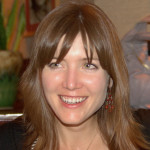
Jessica Julius
Jessica Julius is a Walt Disney Animation Studios creative executive who has worked on hits including Frozen, Tangled, Big Hero vi, and Wreck-It Ralph. She'southward now involved in developing Frozen two with the filmmakers.
Since Disney bought Pixar in 2006, and John Lasseter became primary artistic offer of both studios (likewise as Ed Catmull serving every bit President of both Walt Disney Animation Studios and Pixar), the venerable studio has completely inverse how it develops movies.
In 2014, Disney won its first Oscar (for Frozen) in the Animated Feature category – a category established in 2001. The following year, the Disney Animation motion-picture show Big Hero half-dozen brought home the Academy Accolade.
Jessica attended the University of North Carolina, where she majored in communications (with an emphasis on film) and minored in women's studies. She came to development work after stints as a publicist and in a talent bureau – and after selling habitation security systems door-to-door in LA.
Jessica got her beginning at Disney by working every bit an assistant to the president of marketing, then became an banana to the VP of development in blitheness.
I spoke to her at the Austin Moving-picture show Festival.
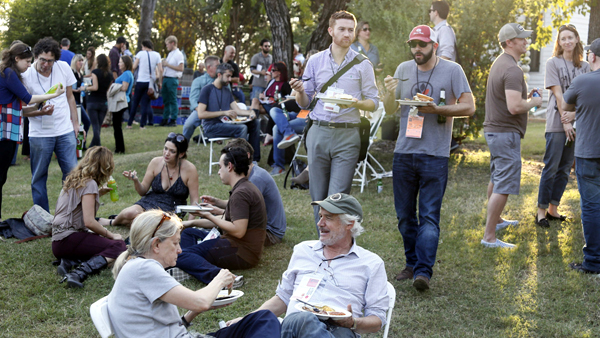
Austin Film Festival
Doing Things Differently
"The way that we do development at Disney and Pixar is very different from the mode they do information technology anywhere else," said Jessica.
"We have a team of directors at Disney Animation who form our "Story Trust." It is a filmmaker-driven studio, not an executive-led studio. Our job as creative executives is to aid back up the directors every bit they're coming up with their ideas and so developing their ideas."
Working with Directors
"When a movie comes out in theaters the directors help promote the release of the pic effectually the world, they then take a piffling break, and and then come up back into evolution. They don't necessarily have any idea what they want to exercise side by side. Some do, some don't. And the culture at Walt Disney Blitheness Studios allows for that.
Jessica and the other creative executives help back up the directors as they figure out what they desire to do with the next five to eight years of their lives — the time it takes to create a Disney blithe feature.
"Every director is dissimilar. Some want to talk from the very showtime. 'This is the kind of theme I'm interested in. This is the kind of world I want to play in. I'chiliad really intrigued by Ten.' We'll aid them talk through it and nosotros'll do research for them."
Know Your World
"Research is a huge part of our procedure," said Jessica. "In the case of Wreck-It Ralph, that director [Rich Moore] knew he wanted to tell the story of a videogame bad guy. So we already had our world: video games. We had to larn everything we could about video games, from Pong onward — and even earlier Pong."
"The further you drill down the more specific your research gets. On Large Hero 6, for instance, the director knew that Tokyo would exist an influence on the setting but he had never been there before. Then nosotros sent him and a small visual development team to Tokyo to absorb that urban center."
"Subsequently on we brought in biologists who specialize in teenagers, so when Baymax [the medical robot in Big Hero 6] brings up a nautical chart for 14 year-quondam Hiro – the primal character – we accept helped make certain the dialogue is accurate."
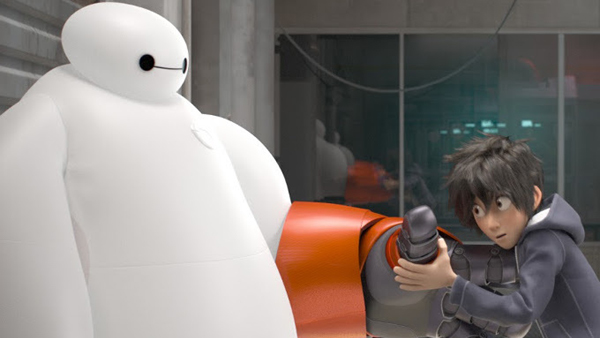
Big Hero 6
Pick the Right Author
Jessica's chore also involves finding the right writer(s) to match with the director.
"Nosotros practise things a little scrap differently. We're constantly reading scripts. The divergence is, we're reading for the author'south voice — not for the material. The directors are coming upward with their own ideas; it's non our chore to notice them ideas. So nosotros get to read a much broader range of scripts than we would if we were just looking for textile for Disney Blitheness."
So Jessica might read an indie-manner script.
"The writer might have a fresh vocalism or the kind of tone or humor that we're looking for. The main things we're looking for in writers are always humor and center. You tin't make a Disney Animation movie and not have those 2 elements. So we tend to read a lot of character-driven indie-blazon stuff."
"The writer we hired to do Wreck-It Ralph nosotros had read four years earlier. Nosotros have a list of people that we know we like – nosotros like the writers, and we like the writing. If nosotros like a script nosotros generally will bring the writer in to do a full general meeting with the manager and the creative executives."
"We desire emotionally-driven, character-driven movies that have humor. So that'south what we're looking for."
Don't Be Prickly
"It'due south a very specific type of person who will work in our world," said Jessica, "because it'southward a very different process. They have to have the personality and sensibilities that will fit with our people."
"Nosotros have to make sure that the person is very collaborative because our surroundings is extremely collaborative. It's not a situation where the writer is going off and writing and turns in a typhoon in half dozen weeks or viii weeks or whatever. They are embedded with us. They accept an office in our building and they're working every single 24-hour interval in the story room with the directors. And so they demand to be extremely collaborative, they demand to be very flexible, they need to be fast, and they need to have emotion."
"It's as well important to not accept a prickly personality. Yous accept to play well with others. Some people get writers because they don't necessarily desire to have to collaborate with other people direct – simply via the page. They want to write in their ain world."
Tabular array Reads
The first draft of the script is distributed amid a small group of people. Some of them, including Jessica, volition write notes on the script before a table read. Then after the table read the team gathers and gives notes verbally.
Jessica said that notes might include "This graphic symbol is working" or "This emotion isn't landing right" or "I don't understand why the characters are doing this." Even so, none of these notes – no matter who within the team gives them – are considered mandatory for the filmmakers to implement.
"You offset to see patterns in the notes– consistent bug or questions. Those are the areas to focus on for the next iteration."
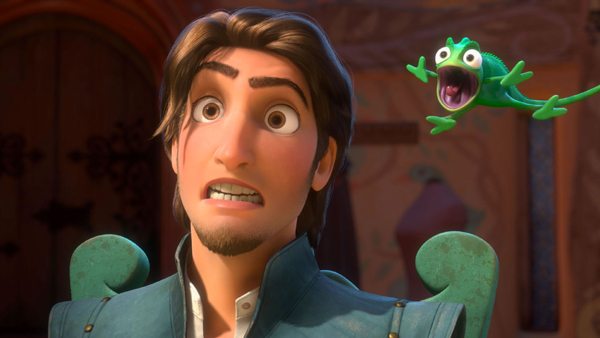
Tangled
What's This Moving-picture show About?
Jessica'due south notes tend to focus on theme and character.
"If I don't empathize what your movie is about and why you lot want to make this pic I have a really hard time wrapping my brain around the rest of it. So that's always my starting signal. And then characters are next, considering characters demand to support the theme and those two things are very much intertwined. From there, I become into more structural-blazon notes like where things are landing and why."
"I dear earthworks in and talking about story. I'chiliad non a huge fan of written notes personally, mainly because to me a story is never black and white. I dearest the dorsum and forth, the solutions y'all can uncover during a deeper word about the notes."
Writing is Rewriting
How should writers answer to the notes?
"Writing, peculiarly screenwriting, is rewriting. It'south never the outset draft. The people who are in that room giving you notes are at that place to help yous make it better. Nosotros're not at that place to tear it downwardly merely for the sake of tearing it down. The fundamental matter is hearing the annotation backside a note."
The Note behind the Note
"Here's an example from Frozen. Early on on, in that location was a question of what Anna actually wants. There was a point where she wanted to leave Arendelle and sail away. Some of the solutions that came up were like, 'possibly she wants to become exploring.' And that wasn't the right solution. The notation was 'Why does she want to become away from Arendelle?' But the notation behind the note was 'What does Anna need and want and what is best in service to this story most these two girls?'"

Frozen
It'southward Always Therapy
Jessica noted that many of the conversations the creative team had about Frozen were extremely personal.
"I would come home and tell my married man, 'I feel like I've been in therapy for viii hours every single 24-hour interval for the past three months.' You're talking about securely personal things considering you lot want to become at the true emotion of what's happening."
"It's ever therapy. All of our movies are personal. Every single i. They are often comedies, but they are always deeply emotional at their cores."
A Flipbook Come to Life
At some point, when there are pages and pieces of the script, the creative squad becomes "visual writers." The roughly-sketched scenes are cut together by an editor who adds temporary sound effects, scratch-style dialogue, etc. The team can then scout the moving picture as an animatic.
"Information technology's like watching a flipbook come up to life," said Jessica.
Trusting the Story Trust
The rough animatic version of the movie is screened earlier what Disney calls the "Story Trust."
This group is made upward of the other directors and writers in the edifice, plus the artistic executives and senior leadership like John Lasseter (the Master Artistic Officer at Pixar and Disney Animation). At that place can be anywhere from fifteen to 30 people in the room.
"Our chore is to support, not dictate," said Jessica. "We offering notes and idea-spurring suggestions."
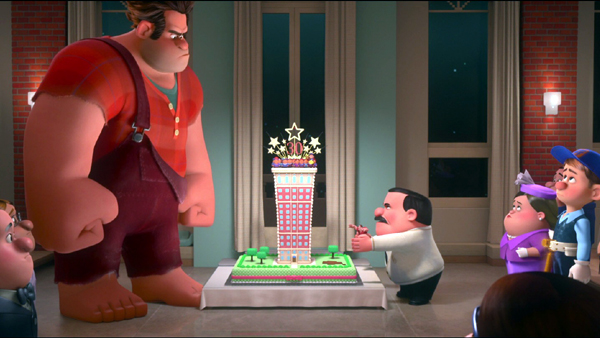
Wreck-It Ralph
Building Up, Not Tearing Down
Jessica said the Story Trust screenings are awesome.
"You have then many smart people in a room together talking almost how to make this movie better. It's not to tear downwardly. It'due south ever to build. It'southward 'I don't understand this character'southward arc. What is it that he actually wants? What is it that he actually needs?'"
"At the early stages of the film the questions are like 'What exactly is this movie about?' Considering your theme gets a little muddled as stuff goes in."
Getting Back to Piece of work
What happens after the Story Trust feedback?
"Yous immediately go back to work. You lot start taking the notes you lot heard and saying 'We need to figure out this, this, and this.' There are goals — areas to focus on for the next screening cycle… Because you can't fix everything all at once. We exercise endeavor to set up everything past the time the picture show is released."
Throughout the development process at that place are half-dozen to 10 repetitions of the cycle: screening, feedback, changes.
Jessica said that one of the greatest moments is when the story artists and other members of the creative team say "She wouldn't do that" with reference to a grapheme.
"That's when you know it'south working — because you're starting to understand who the characters are."
Information technology's Never Done
How do they know when the motion-picture show is done?
"It's never done," said Jessica. "There'south never a betoken where yous experience like it's perfect. And we want it to be perfect. You're pouring your heart and soul into this film. Merely there's a certain point where yous say 'that'south working and now we take to move on to the next thing that's non working.' But we work equally hard every bit we can to make sure that it's as adept every bit it peradventure can be."
Source: https://www.creativescreenwriting.com/how-your-indie-style-script-could-get-you-a-job-with-disney-animation/
Posted by: ellenburgimithe67.blogspot.com

0 Response to "Who Do I Contact At Disney Animation Studio About A Movie Script I Wrote For Production?"
Post a Comment